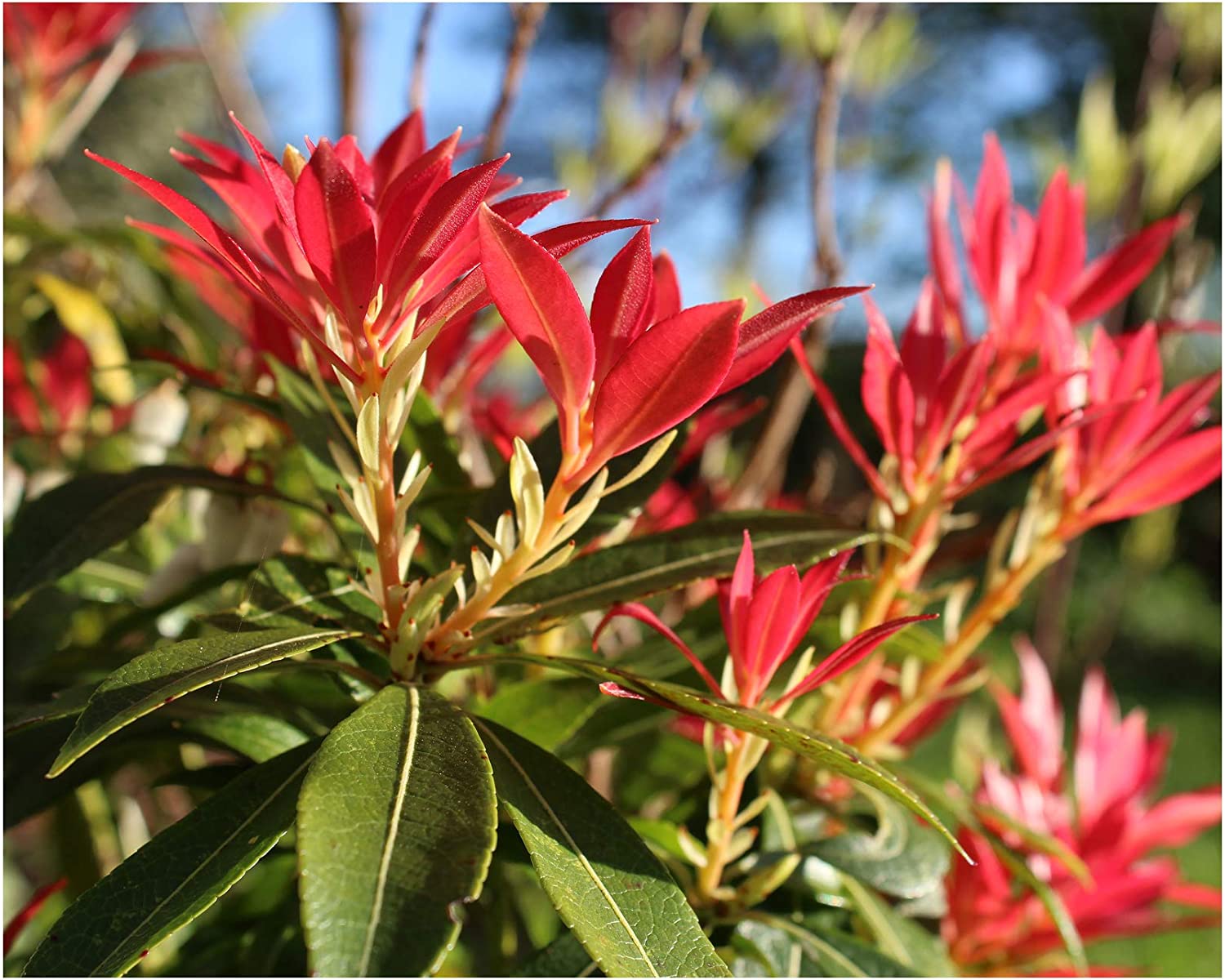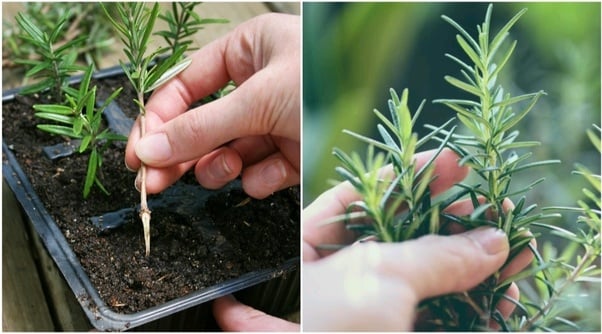The Ultimate Guide To Growing and Caring For Star Jasmine Plants

Table of Contents
If you are looking for an ornamental plant that not only gives a fantastic makeover to your balcony or garden but also uplifts your mood with its exquisite fragrance, then Star Jasmine is the perfect choice for you. With its beautiful white flowers that grow in clusters and dark green leaves, this plant is surely a wonderful addition to your garden.
Star Jasmine is a liana plant, which means it is a plant that needs vertical support to climb up to fulfil its sunlight requirement. A member of the Apocynaceae family, these flowering plants are native to Korea, Japan, China, and Vietnam. However, nowadays, these plants are grown worldwide owing to their increasing popularity as decorative plants.
Star Jasmine is a slow-growing plant that requires initial care and is known to prefer a sunny location for growth. However, it can easily cope with a partially shady location. Learn to grow and care for your own Star Jasmine in this easy guide.
Choosing the Right Variety of Star Jasmine to Grow
There are many varieties of these gorgeous, fragrant plants. You can choose the one that suits you the best according to your needs among the following:
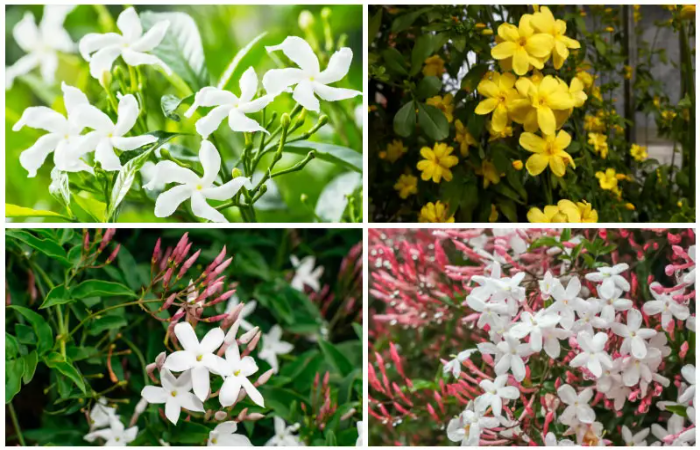
1. Trachelospermum asiaticum ‘Ogon Nishiki’
Touted as the most commonly used Asian variety, this one gives out variegated leaves with yellow, white, and gold contrast. Although a climber, these are perfect for growing in pots or gardens as a ground cover. It’s a low-maintenance variety which is ideal for growing at home.
2. Trachelospermum Jasminoides ‘variegatum’
It gives out fragrant white flowers that grow in clusters and begin to turn into cream-coloured flowers as they age.
3. Trachelospermum Asiaticum
It is commonly known as Chinese Jasmine and is ideal for growing in pots indoors. This variety produces classic scented cream-white flowers during the period of mid to late summer. A notable thing here is that they are reliably hardy, so they need winter protection.
4. Trachelospermum Jasminoides
Perfect for the warm sunny spot, this variety is known to produce dark green-coloured leaves, which turn bronze during winter. Flowers bloom during mid and late summer. It may need winter protection during extreme cold weather.
How to Grow Star Jasmine
Now that you are done with choosing the right variety for yourself, it’s time to learn to grow them.
1. Propagating
Star Jasmine can be propagated in two ways, through seeds or through cuttings.
Growing from Seeds
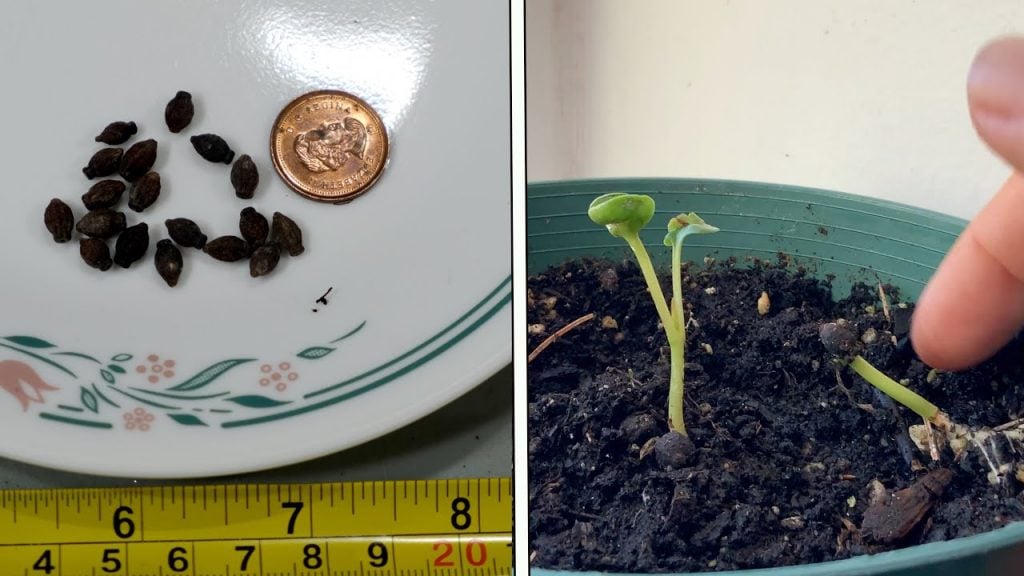
Although in the UK, it is not feasible to use seeds for the propagation of Star Jasmine, as the summers are cooler here and plants hardly produce any seeds. For other regions where the temperature ranges from 15 -20 degrees, they can be grown from seeds. To grow Star Jasmine from seed, first of all, you need to soak them for 24 hours. Then take a pot with soil, water it, and allow it to drain. When the water is drained, and the soil is moist, you can easily sow your seed. After sowing the seed, cover it with plastic and keep it in sunlight. Always remember to use only one seed per pot. When the seedlings start producing two pairs of leaves, you can shift them into the planters or repot.
Growing from Stems
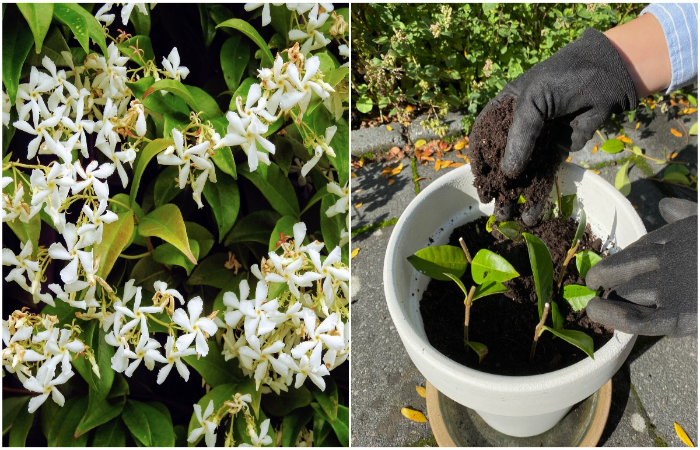
To grow Star Jasmine from stem cuttings, make the cutting about 6 inches long just below the bud. Choose a semi-ripe cutting between June to October, dip it into rooting hormone, and plant it in damp sand. Cover the pot with plastic and keep it in sunlight. When the roots are formed, you can transfer it into potting soil.
2. Planting
Star Jasmine is planted in the spring season. For planting Star Jasmine in the garden, dig a medium-sized hole and add grit and well-rotted compost to it.
You can add mycorrhizal fungi to boost the growth of the root network. After adding all the necessary ingredients as suggested, add the soil again into the hole and water it generously.
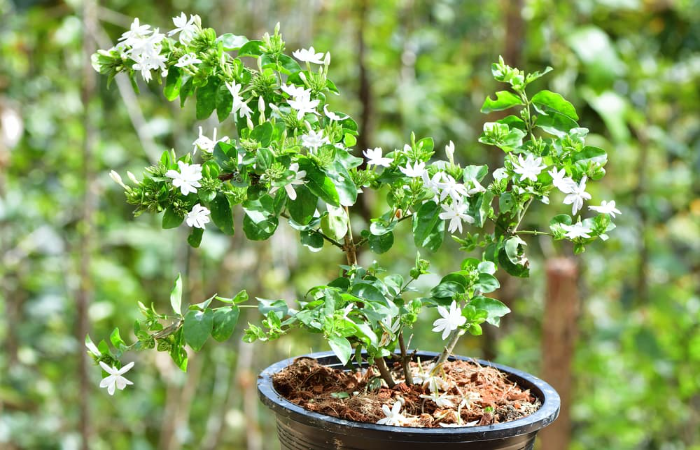
If you are growing Star Jasmine in pots, it is quite significant to take a wide pot with a proper drainage hole. You can keep the pot in a place that receives sunlight for at least 8 hours a day. However, placing the plant in direct sunlight in summer can scorch its leaves. The process of planting remains the same for planting in pots too.
Remember to provide support for this vine to grow to its maximum potential. Sheltered gardens are the best place to grow Star Jasmine as it protects the plant from harsh cold and extreme winds.
Caring Tips for Star Jasmine
Star Jasmine requires only initial care during the planting. Once it has established its root system, the plant can pretty much survive on its own with minimal care.
Let’s see how various factors affect the growth of this beautiful ornamental plant and how you can make sure that your plant remains healthy throughout its life span.
1. Sunlight
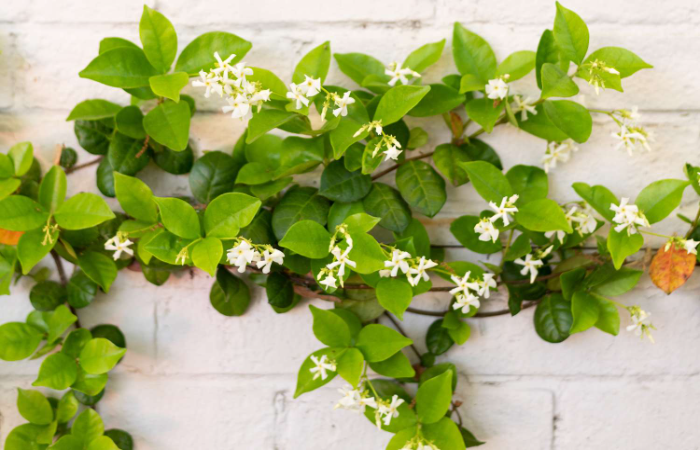
This plant requires full sunlight to reach its maximum potential. It can also grow in full or partial shade, but it produces fewer flowers and remains short in this case. Make sure to provide a least 8 hours of sunlight to your Star Jasmine.
2. Soil
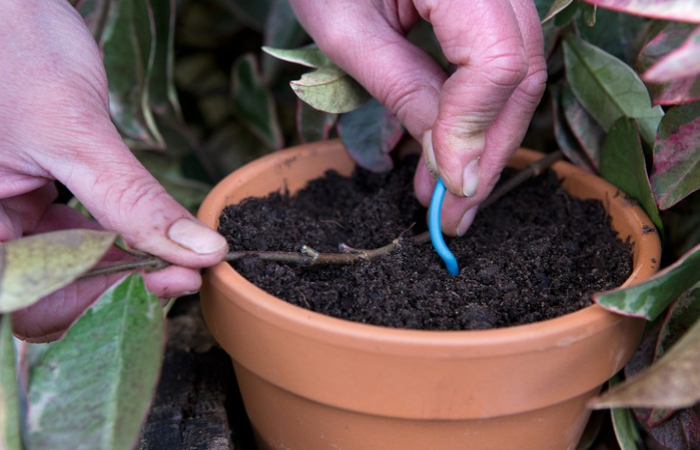
Star jasmine thrives well in fertile and well-drained soil. It needs slightly acidic soil (pH 6-7) to grow. If you are planting them as a ground cover, remember to plant them at a distance of at least 5 feet from each other. It’s very important to keep the soil moist all the time; apply a thick mulch of compost or leaves to reduce moisture loss from the soil.
3. Water
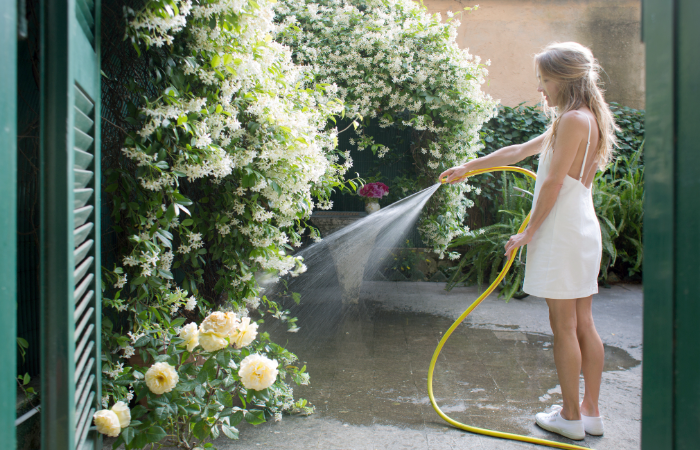
Star Jasmine requires regular watering, especially during the growing season when the root system is developing. Watering once a week works in most cases; however, if you are growing them in pots or containers or If the summer gets too hot or dry, make sure to increase your watering frequency so as to keep their growth consistent.
4. Pests and Diseases
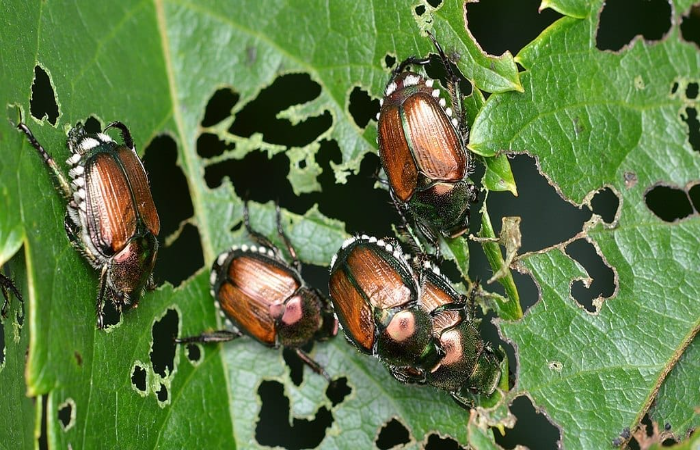
Although star jasmine is not prone to many pests, it does attract scale insects sometimes. These insects are responsible for the development of sooty mould. In some areas, they may also get infested by Japanese beetles.
To cope with these pests, make sure to apply some horticultural oil, such as Neem oil, as soon you see the first sign of these pests.
5. Fertilizers / Feeding
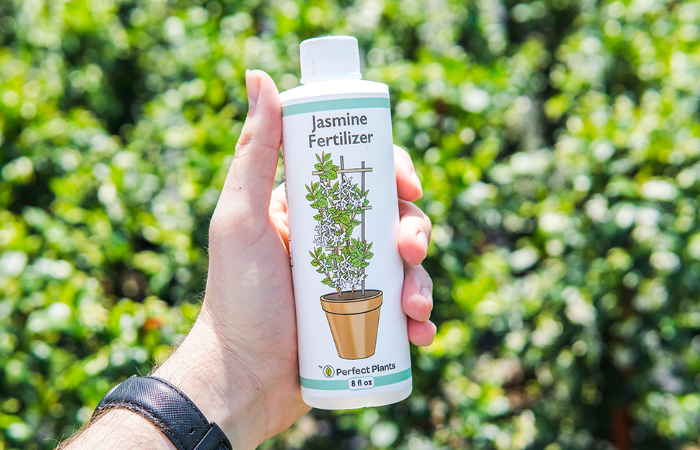
The ideal time for providing the Star Jasmine plant with fertilisers is in early spring and then again in mid-summer. Choose a balanced slow-release fertiliser and add it before buds begin to form.
Nutrient-deficient Star Jasmine is characterised by low flowering or not producing flowers altogether. It is important to feed your plant with a fine liquid fertiliser to ensure its nutrient requirements.
6. Temperature and Moisture
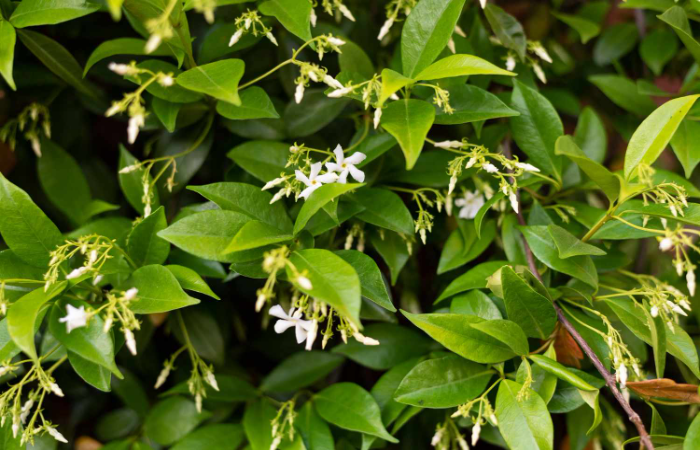
Star Jasmine plants are very tolerant of temperature conditions. They can even thrive well in temperatures as low as 10 degrees Fahrenheit, unlike other plants. However, they require a temperature between 60 to 75 degrees Fahrenheit to grow and start flowering.
These plants love a humid environment; they require a fairly moist environment to survive.
7. Pruning
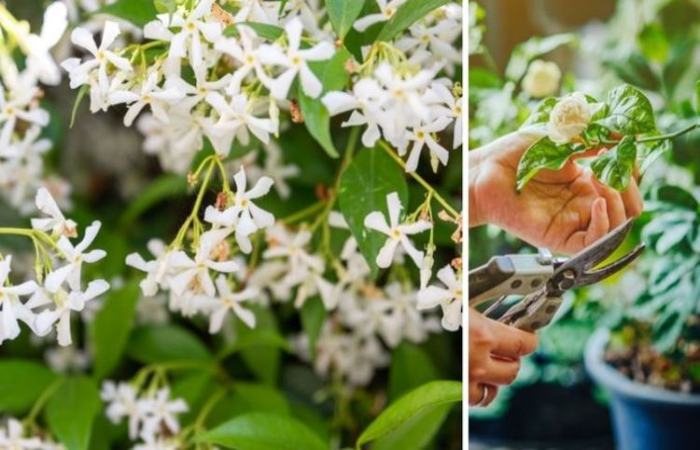
Star Jasmine is a fast-growing plant, so pruning is recommended to keep it in shape. The best time to prune your Star Jasmine is just after flowering season. The ideal way to prune your plant is to remove dead leaves from the plant and start from the bottom and work your way to the top.
After pruning, do not forget to water the plant to let it overcome the shock from pruning.
Conclusion
Star Jasmine is a beautiful evergreen plant that is sure to enhance the beauty of your garden and indoors with minimal care and supervision. Its mesmerizing scent and lush green appearance undoubtedly make it one of the best plants to grow indoors, as well as a ground-covering plant.
They can be grown in a large variety of soil, including slightly alkaline to acidic and are also known to thrive well in partial or heavy shade, although requiring full sun to produce flowers and grow to their full potential. They are also not very prone to attack by pests; however, sometimes, they do get sooty moulds. During winters, these plants do not require much watering, but in summers, they need to be watered regularly.
They can be propagated mostly through stem cuttings and need support to grow. It can easily twirl itself around other trees in your garden if left unattended, so it is recommended to watch these plants closely and trim them whenever needed.
Frequently Asked Questions (FAQs)
Does Star Jasmine need Winter Care?
Star Jasmine is a winter hardy plant to a certain extent, i.e., it is known to tolerate winters and thrive well in low temperatures. However, if the temperature drops below 10 degrees Fahrenheit, they will need winter protection as they begin to lose their leaves due to extreme cold.
How to Collect Star Jasmine Seeds?
Star Jasmine produces seeds during late summer. You can collect the pods which have seeds carefully and plant them in pots or in your garden. Remember to collect the pods as soon as they begin to turn brown and make sure they do not burst while collecting them.


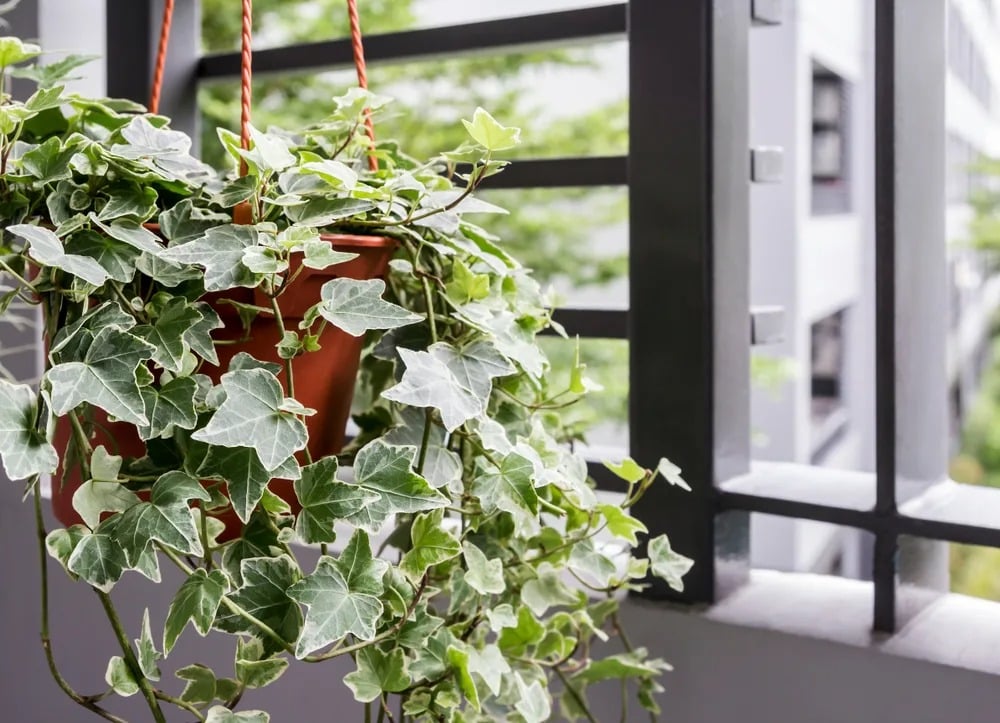
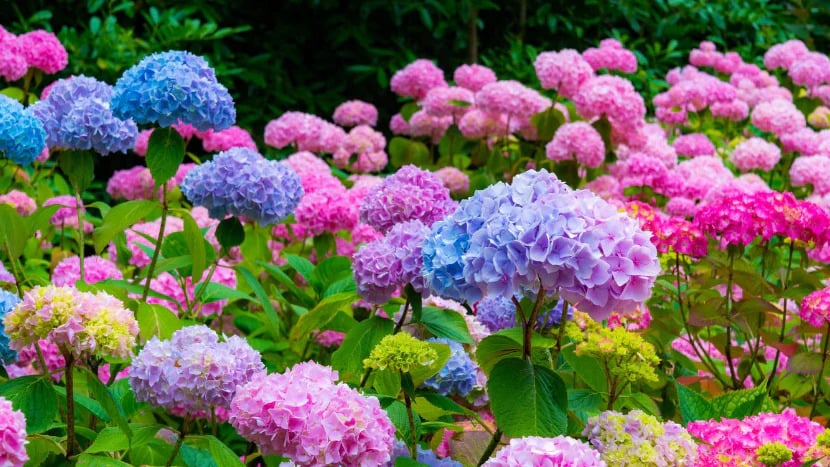
![How To Grow and Care for Dahlias [UK]](https://staging.thearches.co.uk/wp-content/uploads/How-To-Grow-Dahlias-1.jpg)
